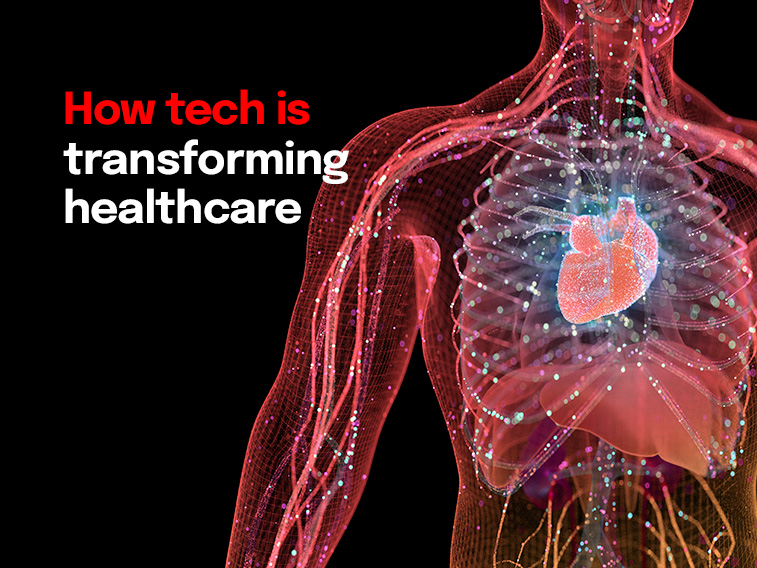13 May 2025
September 13, 2023
Tech changes are more than skin deep and here to stay
This article first appeared in the Australian Financial Review.
By Health View

Australia has just 600 dermatologists and with only 20 new specialists graduating a year, there are not enough to service the population, especially in a sunny country with high skin cancer rates.
It’s a problem that Dr Philip Tong started thinking about when he was studying dermatology and one he is now trying to address with the use of technology at his start-up Dermscreen, which checks for skin cancers.
The company has developed photographic hardware to capture an image of 95 per cent of a patient’s body. It then uses a digital health platform to securely transmit the image and associated metadata such as the patient’s sun history to a dermatologist employed by Dermscreen, who then reviews the image.
The patient’s doctor receives a report using a traffic light system, with red for something that needs immediate attention, amber for something that requires monitoring and green for all clear.
In doing so, the technology overcomes several problems.
The first is the shortage of dermatologists, who cannot meet demand for appointments. The Dermscreen report essentially triages skin cancer patients, sorting those who need a biopsy or specialist treatment from those who don’t, Tong says.
It allows dermatologists who do the report on the image to work from home or a remote location, thereby increasing usage of the specialist practitioners.
The service also allows patients to have their moles examined promptly, rather than suffering the anxiety of a long wait for a dermatologist appointment. And because their moles are being examined by specialists, they are less likely to have unnecessary mole removals.
“This is very much a service that we provide to healthcare professionals so that they can better look after their patients,” Tong says.

“It compresses the entire patient journey if something is suspicious.”
The Sydney-based dermatologist says there’s no reason why the company can’t export the technology and have a global impact on the way dermatology services are accessed.
Dermscreen is just one example of how technology is being used to help the health system cope with limited resources and a growing need as the population ages and to help provide a better patient experience.
“Scarce labour resources is the sort of thing that’s driving the profession to think more about alternative ways of serving their patients,” says Andrew Loveridge, customer executive, NAB Health and Medfin.
“And digital definitely will be an enabler in terms of creating a better capacity for that profession.”

Uses range from the booking appointments and receiving prescriptions via text to health professionals conducting pre-screens of a patient prior to an appointment, which might reveal that a patient can be treated by a nurse instead of seeing a doctor.
And doctors can be pre-briefed with information about why a patient is coming to see them, which will make for more meaningful consultations.
The way that the COVID lockdowns drove so much service delivery to online models has had a lasting impact on healthcare and consumer expectations.
“Through COVID, the number of appointments or consultations done via the phone or Zoom or hybrid‑wise was phenomenal. So medical professionals have seen this thing work and obviously see that as definitely another channel to service their patient base,” Loveridge says.
“We’re seeing more and more using the platforms and the tools to improve that experience and adopt the same sort of experience that the consumer would have if they were wanting to buy a service of a different nature.”

Wearable technology is another key development. Smart watches, for instance, are monitoring everything from a person’s blood pressure to their heart rate, sleeping patterns or number of steps per day.
Around one in four Australians says they had worn a wearable technology in the past year to help inform them about and manage their health, according to an NAB Health Insights report. Among 18 to 25-year-olds, the figure rose to four in 10.
Oral and maxillofacial surgeon Dr Patrishia Bordbar is using technology to improve efficiency and at the same time deliver a better experience to the patient in her highly specialised field.
“In the last decade technology and patient expectations for personalised medicine and surgery have completely transformed my practice and the level of accuracy and outcome I can offer my patients,” she says.
Bordbar plans her complex reconstructive surgeries of the face, skull and jaw through computer simulations and uses three-dimensional printed custom-made cutting guides and patient specific implants.
“We can print the patient’s skull and if a piece of their bone is missing because of cancer, trauma or birth defect we can make a mirror image model using the patient’s ‘normal’ side to assist with obtaining the best possible outcome,” she says.
“Surgeries are planned and executed more reliably and accurately and my experience is that the surgery time is significantly reduced with the customisation of the guides and implants.”
The technology also allows her to collaborate remotely with multiple clinicians when planning a surgery and to provide efficient training for the next generation of surgical trainees.
While technology has great potential, Bordbar says we need to be careful that we don’t create a two-tier health system, where the well-off receive the latest treatments and others receive the cheaper conventional approaches.
As fast as healthcare is changing, Loveridge expects one thing to remain constant.
“I don’t feel we’ll be talking to a robot,” he says.

“Healthcare is a very personal thing and so people will want to definitely interact with a human being. But I think there will be a much smoother way in terms of booking, accessibility and proximity.”
Special Report: Health Sector
Health Technology


